Looking for a hotrod varmint cartridge that delivers nearly 22-250 level performance out of an AR-15? Here’s what you need to know about the new 22 ARC.
If there are two things literally everyone (even those who aren’t fans of the company) can agree that Hornady does well, it’s releasing new cartridges and marketing the heck out of those new products. Well, the new 22 ARC is the latest example of Hornady doing some of the things the company does best.
The new 22 Advanced Rifle Cartridge (also known as the 22 ARC) from Hornady aims to combine the strengths of the highly regarded and very successful 223 Remington and 22-250 Remington cartridges into a single package and to fit into a specific niche no mainstream rifle cartridge currently occupies: delivering 22-250 Remington level performance out of an AR-15 platform with phenomenal accuracy.
Plus, they incorporated a few other design features, some brand new, others lifted from their line of Creedmoor and Precision Rifle Cartridges, to further enhance the performance of the 22 ARC.
As often happens when any company introduces a new cartridge, some in the hunting and shooting worlds were thrilled with the prospects of the new 22 ARC, but others were less than impressed.
Is the 22 ARC just another example of a rifle cartridge developed as a solution to a problem that doesn’t really exist that will just fade into obscurity in a few years? Or is this cartridge going to really take off like some of the other fruits of the design team at Hornady like the 6.5 Creedmoor and the 7mm PRC?
In this article, I discuss the history, ballistic performance, and the strengths and weaknesses of the 22 ARC in detail. I’ll also briefly provide some information on how the 22 ARC compares to the 223 Remington and 22-250 to give you an idea of what sort of performance you can expect from the cartridge and so you can decide if it best fits your needs as a hunter.
Table of Contents
Before we get started, I have an administrative note:
Some of the links below are affiliate links. This means I will earn a small commission (at no extra cost to you) if you make a purchase. This helps support the blog and allows me to continue to create free content that’s useful to hunters like yourself. Thanks for your support.
22 ARC Profile & Design
First, I recorded an entire podcast episode on this exact subject. If you’d rather listen or watch than read, watch the YouTube video below.
Manufacturers have used a simple formula for designing varmint cartridges for most of the past century: smaller caliber rounds pushing lightweight bullets at a high velocity.
Conduct survey of the most popular rounds used by coyote hunters in North America today and two rifle cartridges in particular will almost certainly appear near the top of list: the 223 Remington and the 22-250 Remington.
Though the 223 Remington is a pretty high velocity round itself, the 22-250 Remington is a higher performance cartridge that can push the same weight bullet 400-500fps faster than the 223 Remington. This results in a flatter trajectory and more muzzle energy.
A flatter trajectory can really pay dividends on an open country coyote hunt. Coyotes aren’t very big animals to begin with, they rarely stand still for long, they live in open country that’s often windy, and things can also just happen pretty quickly out there sometimes. In a situation where the hunter doesn’t have time to get a solid range to the coyote, using a flat shooting round like the 22-250 could be the difference between a hit and a miss when the animal is several hundred yards downrange.
On the other hand, the 223 Remington also works in the AR-15, which is far and away America’s most popular rifle model.
Those “black guns” have gradually become an incredibly popular choice for predator and varmint hunters in recent years. Among other reasons, a semi-automatic rifle like the AR-15 offers undeniable advantages for follow-up shots when multiple animals respond to a call or to clean up messes in cases of missed or wounded dogs.
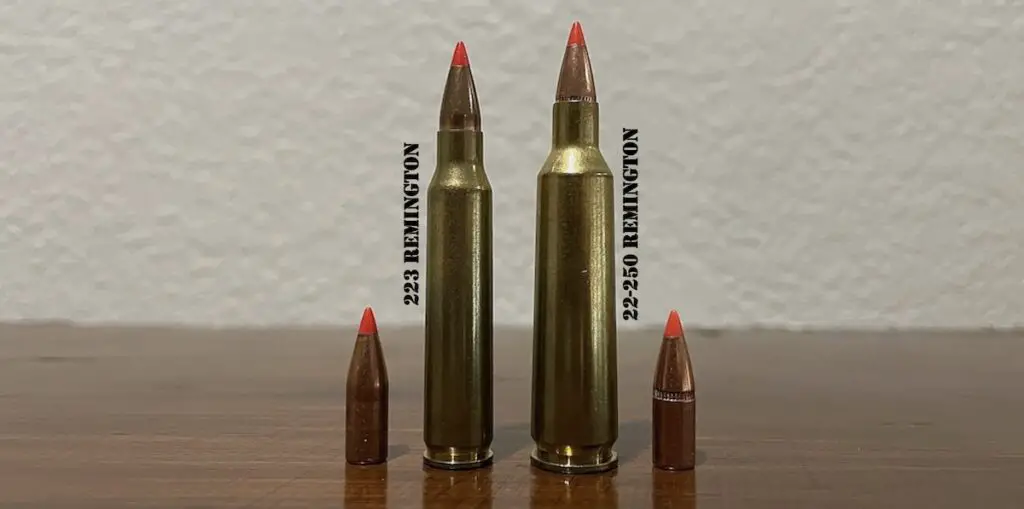
Unfortunately, the .22-250 Remington cartridge is simply too large to fit in an AR-15 rifle and hunters wishing to take advantage of the 22-250’s ballistic performance in the AR platform must use a larger, heavier, and often more expensive AR-10 instead.
Furthermore, the 22-250 has a slower 1:14″ SAAMI standard twist rate that restricts the cartridge to using lower BC bullets that don’t perform very well in the wind. That can be a big problem in the blustery conditions often encountered on open country coyote hunts out west.
For example, I have a friend who uses a 22-250 for culling big game like springbok and blesbok in one of the more open parts of South Africa that somewhat resembles the western plains of the USA.
He wants to minimize meat loss on those animals and to simplify his recovery efforts afterwards, so he does his utmost to drop game in their tracks with a single shot to the head using a 55gr V-Max from his 22-250.
He told me that set-up works great for his purposes and he can often take several animals from the same herd from around 200-250 yards away.
As long as he drops each one instantly, the rest don’t get too spooked.
The mild recoiling 22-250 doesn’t beat him up, even after taking several dozen animals in a day. Plus, the flat shooting nature of the cartridge means he doesn’t have to worry too much about holdover at that range.
However, things can get tricky when trying to make a headshot on an animal at 200-300 yards if the wind picks up (which often happens in that part of South Africa).
With all that in mind, hunters have pined for the best of both worlds: a compact cartridge with the ballistics of the 22-250 Remington that would also function in an AR-15 while at the same time also performing better than both the 223 and 22-250 in windy conditions.
Various cartridges have attempted to fill this niche in more recent years, but failed for various reasons.
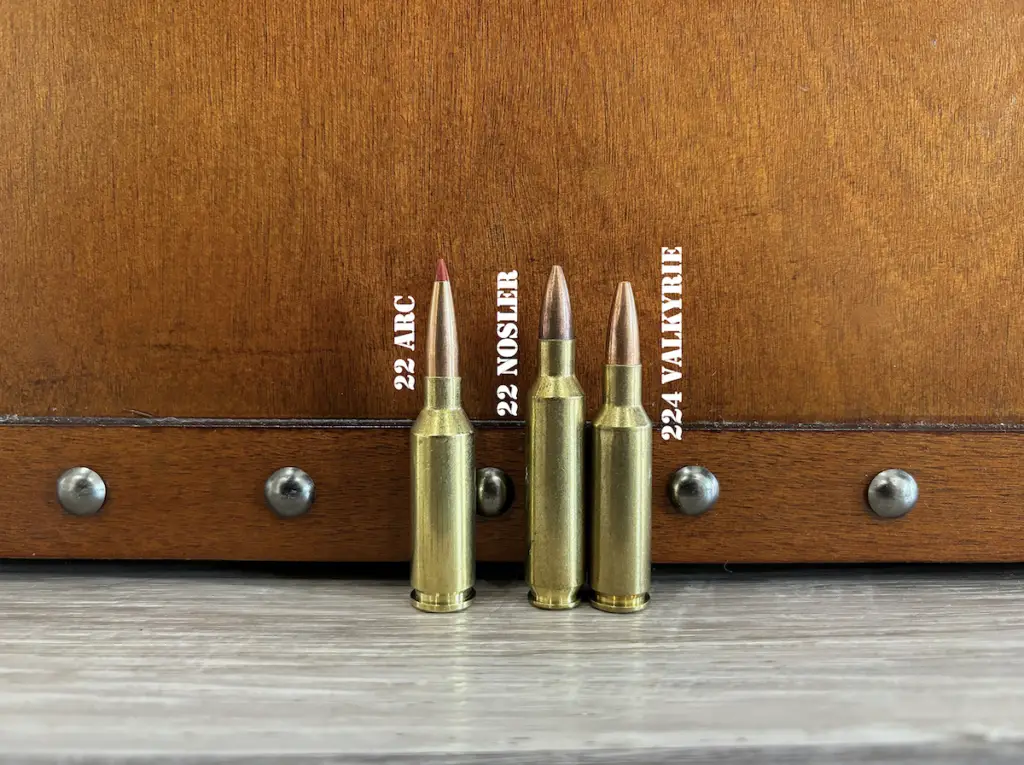
For instance, the 22 Nosler nearly duplicated 22-250 level performance with the same weight bullets, but still fell a little short of the 22-250 and also just never caught on with the public at large. Likewise, the 224 Valkyrie had impressive ballistics on paper and could fire heavier .22 caliber bullets at remarkable velocities, but also developed a reputation for erratic accuracy with certain bullet types and weights.
Thus, the field remained nearly wide open for Hornady to roll out a new product to fill that gap.
As the story goes, the cartridge now known at the 22 ARC started out as a side project by a couple of guys at Hornady they called the 22 Coyote. This project had a goal of delivering 22-250 performance out of the AR-15.
It took over a decade for that everything to finally come together with the 22 Coyote project though and SAAMI standardized it in early 2024 as the 22 Advanced Rifle Cartridge.
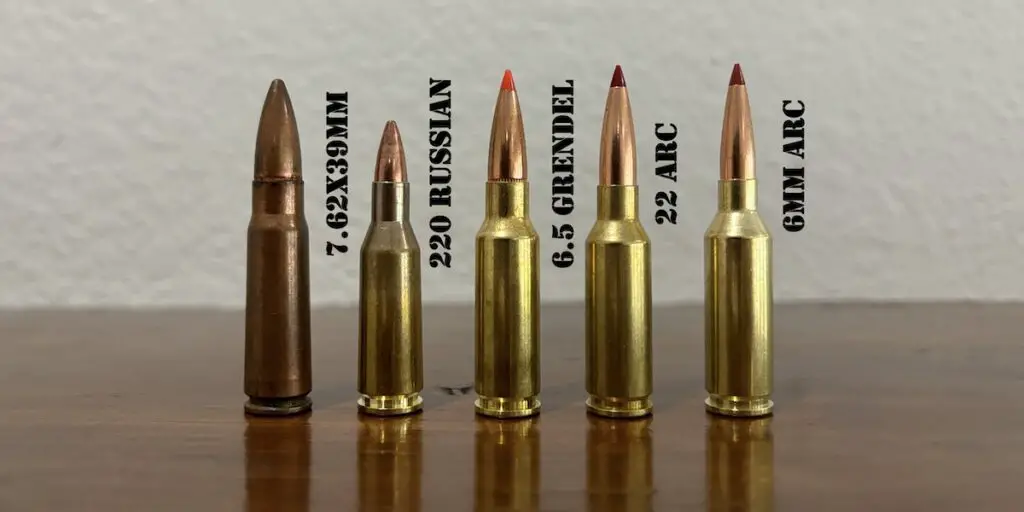
Just like its cousin the 6mm ARC, the 22 ARC is descended from the 6.5 Grendel (which is itself descended from the 7.62x39mm and 220 Russian cartridges). However, the 22 ARC is not simply a rebranded 22 Grendel wildcat as some have claimed.
No, the 22 ARC also has a few important modifications that make it more than just a 6.5 Grendel necked down to .22 caliber.
I’ll hit the high points of the 22 ARC first, then we’ll dive into those specifics I just teased.
22 ARC Specs
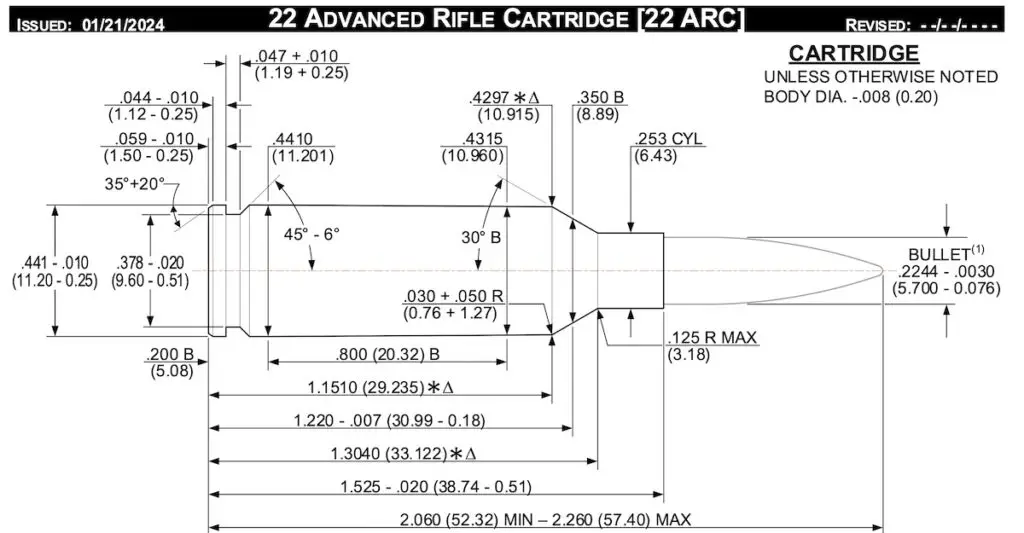
- Bullet Diameter: .224″
- COL: 2.260″
- Case Length: 1.525″
- Case Head & Rim Diameter: .441″
- Shoulder Angle: 30 degrees
- Neck Length: .221″
- Head Height: .735″
- 22 ARC Case Capacity: 34.7gr H2O
- 22 ARC Twist Rate: 1:7
- SAAMI Max Average Pressure: 52,000psi
Note: while the case capacity listed above is a good indication of the 22 ARC powder capacity, exact case capacities will vary slightly according to the brand of brass used.
In this case, I obtained that figure of 34.6gr H20 for 22 ARC case capacity by measuring the powder capacity of 5 individual 22 ARC expended cases (Hornady brass) and averaging their measured capacity.
Now let’s dive into the specifics of this cartridge that I just teased.
First, the 22 ARC utilizes many of the same modern cartridge design principles Hornady has refined with cartridges like the 6.5 Creedmoor and their line of Precision Rifle Cartridges that improve their accuracy potential.
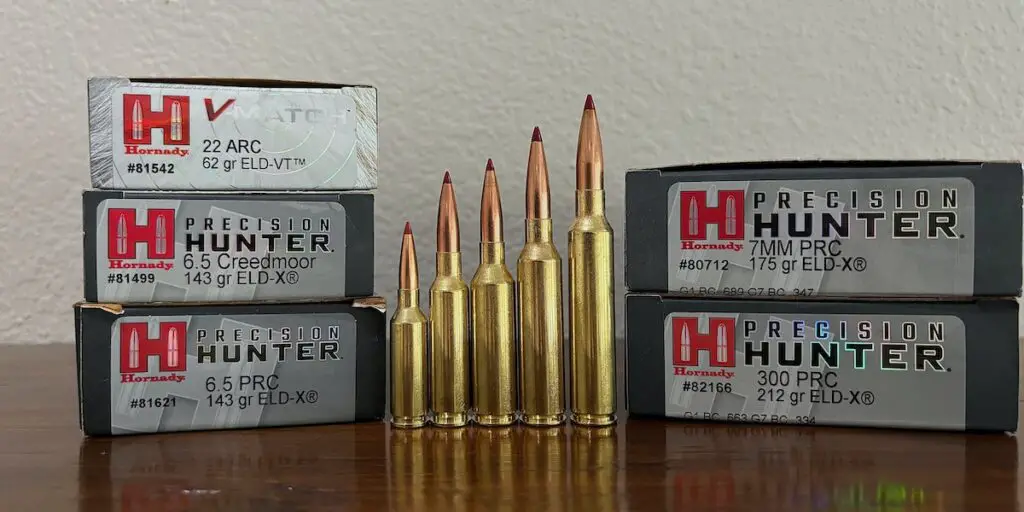
John Snow wrote a fantastic article on this subject for Outdoor Life, but long story short, companies designing new cartridges these days typically employ cartridge design principles that incorporate best practices obtained from competition and benchrest shooters to obtain the best possible accuracy.
Cartridges designed using these principles use faster twist rates to stabilize heavy, high ballistic coefficient bullets, have cases with a long enough neck to support those longer, high BC bullets, can seat those long, high BC bullets to the SAAMI specified maximum overall length without intruding into the powder column, employ minimal body taper, headspace off sharp shoulders, and have a chamber design with a snug throat.
Taken together, these design principles result in cartridges with a very high degree of accuracy potential, especially at long range.
Let’s drill down into things in more detail with the 22 ARC.
Well, the 22 ARC has chamber geometry along the lines of Hornady’s successful (and highly regarded for accuracy) 6 mm ARC, 6.5 Creedmoor, and Precision Rifle Cartridge lines.
Additionally, the 22 ARC utilizes a steeper 30 degree shoulder for headspacing, has a faster 1:7″ SAAMI spec rifling twist, and has a long enough case neck and has ample head height to use those long, heavy, high-BC bullets I keep talking about.
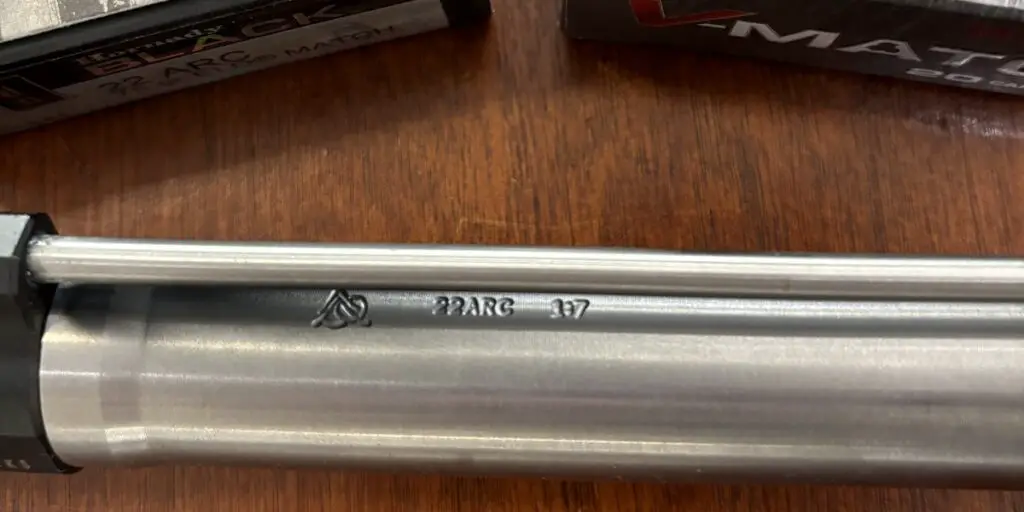
Taken together, all of these factors result in excellent accuracy potential for the 22 ARC with factory ammo and off the shelf rifles, especially with long, heavy, high BC bullets.
This brings me to my next point about the 22 ARC.
Hornady didn’t simply neck the 6.5 Grendel down to 22 caliber and load it with short, stumpy “legacy” varmint bullets like the 50gr and 55gr V-Max. Though it is capable of shooting lighter bullets, the folks at Hornady designed this cartridge for use with a brand new, high BC 22 caliber varmint bullet to further set the 22 ARC apart from the competition.
Specifically, they built a whole new line of ammo they’ve dubbed the V-Match line loaded with their new ELD-VT (Extremely Low Drag Varmint | Target) bullet. Just like the name states, V-Match ammo is optimized for match-grade accuracy and violent expansion upon impact with game.
Without going too deep into the weeds, the new ELD-VT bullet has an open cavity between the lead core and the polymer Heat Shield Tip. This serves several purposes.
First, it allows designers to use a very sleek overall projectile shape that still has a high BC, but is also lighter and can therefore be driven faster.
Second, this open cavity moves the center of gravity closer to the rear of the bullet and farther from the bullet’s center of pressure. Done correctly, this improves stability and accuracy.
Third, this cavity also helps deliver rapid, almost explosive expansion when it hits an animal.
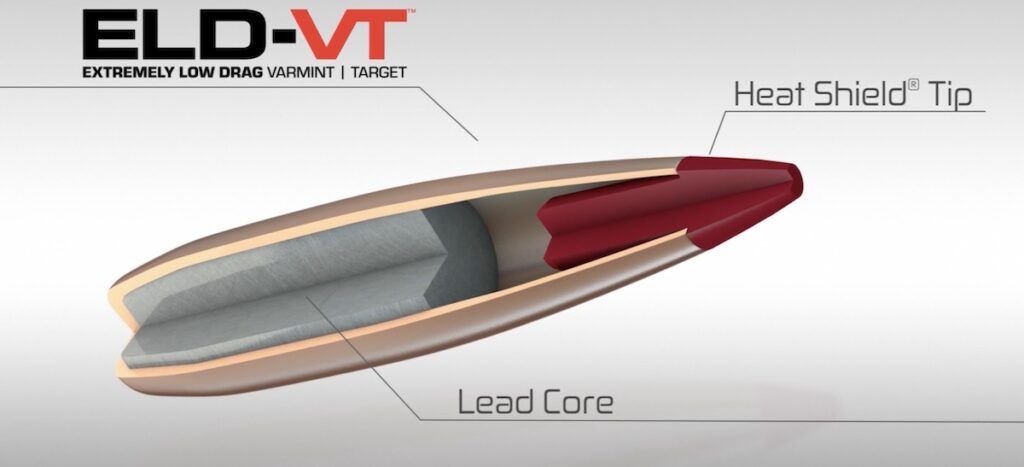
ELD-VT bullets have the same heat shield tip also used in Hornady’s ELD-X, ELD Match, and CX bullets that is resistant to aerodynamic heating and also help initiate expansion upon impact.
Furthermore, these bullets also use the Hornady AMP jacket. It’s important to note that this is a very thin jacket optimized for accuracy and consistency, not for controlled expansion upon impact. I don’t recommend using the ELD-VT on big game, but it’s ideal for use on paper, steel, and varmints.
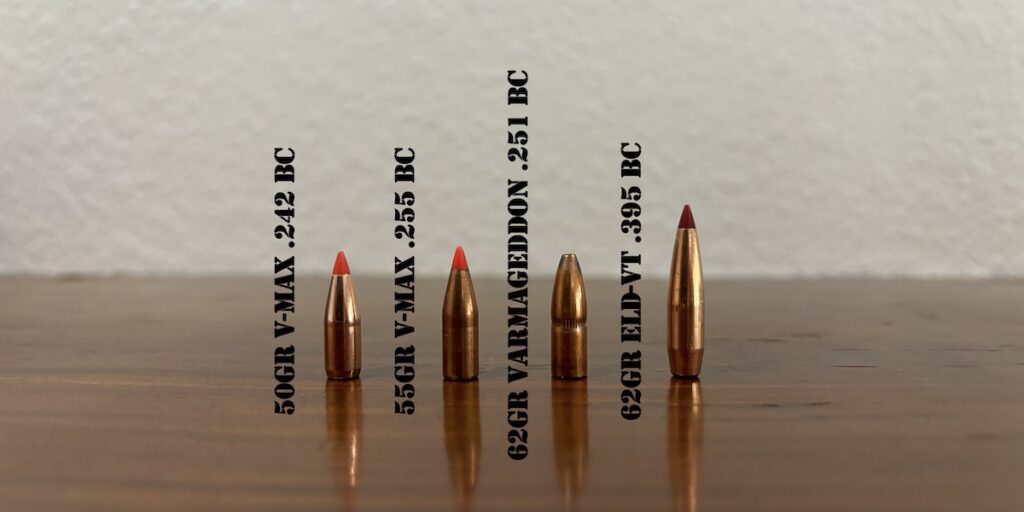
Anyway, Hornady built a new 62gr ELD-VT bullet specifically for the new 22 ARC. Not only can the 22 ARC fling that bullet really fast, but with a G1 BC of .395, it stands head and shoulders above typical varmint projectiles in the BC department.
22 ARC Ballistics
- Hornady V-Match: 62gr ELD-VT (.395 G1 BC) at 3,300fps (1,499ft-lbs)
- Hornady Black: 75gr ELD Match (.467 G1 BC) at 3,075fps (1,575ft-lbs)
- Hornady Match: 88gr ELD Match (.545 G1 BC) at 2,820fps (1,554ft-lbs)
Typical 22 ARC ballistics are a 62-grain bullet at 3,300fps (1,499 ft-lbs), a 75-gr bullet at 3,075fps (1,575ft-lbs) or an 88-grain bullet at 2,820fps (1,554 ft-lbs). All three loads use long, aerodynamic, heavy for caliber bullets that minimize bullet drop and wind drift at extended range.
When compared to other popular 22 caliber cartridges, 22 ARC factory loads generally use heavier bullets with a higher BC. More on this in a second.
Additionally, it’s also worth noting that 22 ARC does really well with an 18″ barrel instead of the 24″ or 26″ barrels that are common with some other high performance .22 caliber cartridges like the 22-250 and 220 Swift. The cartridge also has a SAAMI spec rifling twist of 1:7″ in order to stabilize those high BC bullets.
With careful handloading, it’s possible achieve slightly higher velocities with the 22 ARC and/or utilize even heavier and more aerodynamic bullets that deliver even better long-range performance at the range.
Specifically, maximum handloads published by Hornady show a velocity of 2,750fps out of a gas gun and 2,950fps out of a bolt gun with a 90 grain A-Tip Match bullet (which has a ridiculously high G1 BC for a .22 caliber bullet of .585).
22 ARC Vs The Competition
While a cartridge that can fire a high BC, 62gr projectile at 3,300fps is certainly nothing to sneer at, the 22 ARC seems to fall short of the 22-250 at first glance. After all, a typical 22-250 load fires a 55gr bullet at speeds approaching 3,700fps and other loads for the cartridge can reach even faster velocities.
Was Hornady just blowing smoke when they said the 22 ARC provided 22-250 level performance out of an AR-15?
Let’s dig into the details a little more and compare that 62gr 22 ARC load to a couple of popular varmint loads for the 223 Remington and 22-250 Remington.
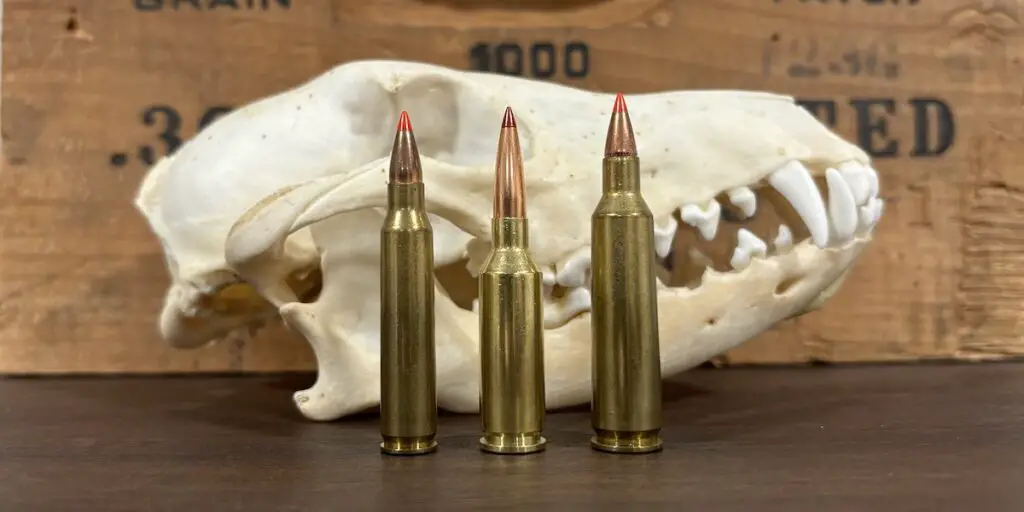
Hornady publishes their data for the 22 ARC using a 24″ long barrel. I have an Odin Works 22 ARC upper receiver with an 18″ long barrel that I’ve shot quite a bit over the past few months. I recorded an average muzzle velocity of 3,202fps with that 62gr ammunition out of my rifle during my last trip to the range.
With this in mind, I’ll include ballistic data based both on advertised velocities as well as those actual velocities with that rifle shooting Hornady factory ammo to give you an idea of what sort of performance you can expect from the 22 ARC under real world conditions with a shorter barrel.
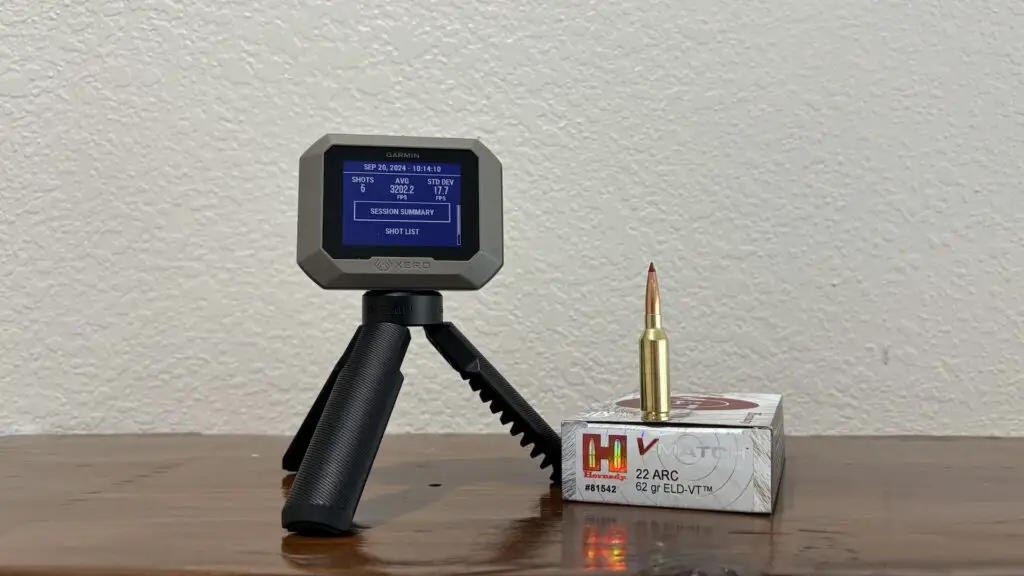
I’ll compare those two data sets for the 22 ARC (for the 62gr load out of 18″ and 24″ barrels) to run of the mill 55gr 223 Remington and 22-250 Remington loads from Winchester’s Varmint X line (both shooting 55gr Varmint X bullets with a .255 BC) and a super high velocity 22-250 load from the Hornady Superformance line shooting a 50gr V-Max (.242 BC).
All of the 223 and 22-250 data uses a 24″ long barrel.
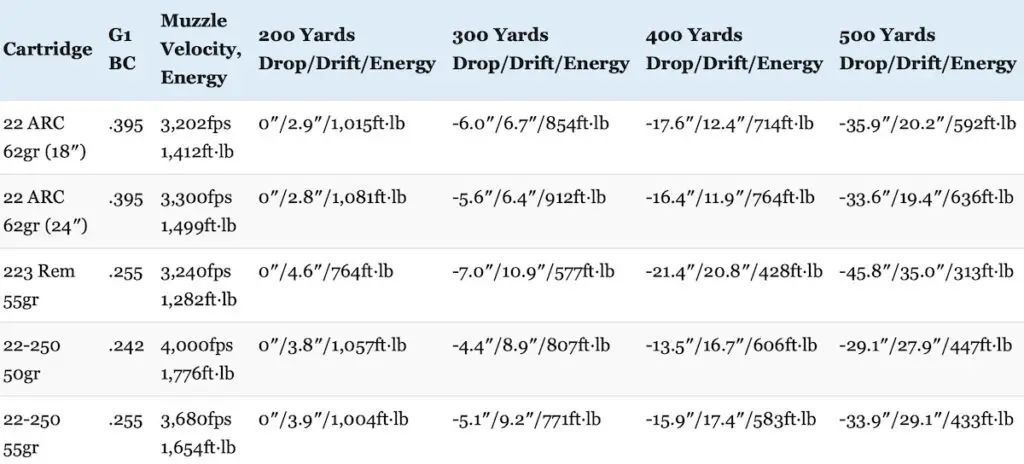
As you can see, the 22 ARC delivers noticeably improved performance relative to the 223 Remington in all areas almost from the get go, even with a barrel 6″ shorter.
Specifically, the slower 22 ARC load has nearly 10″ less bullet drop, over a foot less wind deflection, and nearly 90% more retained energy at 500 yards.
That said, it’s also true both 22-250 loads are flatter shooting than the 22 ARC out to 500 yards.
Even so, the 22 ARC has almost the same retained energy and a small advantage in wind deflection over both 22-250 loads by the time they reach 200 yards. The performance of the 22 ARC vs 22-250 in those areas only grows as the range increases too.
By the time they make it out to 500 yards, even the slower the 22 ARC load has over 30% more retained kinetic energy and nearly 8″ less wind deflection compared to the high performance 50gr V-Max 22-250 load.
The 22 ARC really shines in the wind, which is a key advantage when it comes to scoring hits on smaller targets at longer range. Even that 2″ advantage in wind deflection for the lower velocity 22 ARC load vs the higher velocity 22-250 load at 300 yards is the difference between a hit and a miss on something small like a prairie dog.
On a coyote, a 2″ difference in the point of impact could easily be the difference between hit to the vitals that drops a coyote in its tracks vs a hit that’s not immediately lethal that allows the coyote to escape.
And remember: that’s with a 22 ARC from an AR-15 with an 18″ long barrel vs a 22-250 in a bolt-action rifle with a 24″ long barrel.
Not only is the 22 ARC delivering that sort of performance using a barrel that’s 6″ shorter. but it does so using around 30gr of powder to operate at a max pressure of 52,000psi compared to using around 38gr of powder to operate at a max pressure of 65,000psi for the 22-250 Remington.
If that’s not an example a more efficient design, then I don’t know what is.
Though the 22 ARC has a SAAMI maximum average pressure of 52,000psi to make it compatible with the AR-15 (and factory ammo operates within those specs), Hornady has also published higher pressure load data for the cartridge for use in bolt-action rifles. When loaded to 62,000psi and fired from a bolt action rifle with a 24″ long barrel, the 22 ARC can potentially push that same 62gr ELD-VT at velocities in excess of 3,500fps.
That puts the cartridge literally neck and neck with the 50gr 22-250 load in the trajectory department and blows it out of the water in terms of wind deflection and retained kinetic energy as the range increases.
And no, you can’t load the 62gr ELD-VT in a typical 22-250 rifle. Even though it weighs only 62 grains, the ELD-VT bullet is an especially long and sleek projectile and is thus too long to chamber in a 22-250. Plus, it needs a much faster twist rate to stabilize than the 1:14 SAAMI standard for the 22-250 Remington.
Hunting With The 22 ARC
On paper anyway, the 22 ARC is almost the perfect cartridge for coyote hunting. This is especially true for hunters pursuing coyotes at night with a thermal sight and/or in windy conditions.
Obtaining an accurate range is very difficult at night, but the flat shooting and wind bucking characteristics of the round that are nearly on par with (or better than) the 22-250 really come in handy under those conditions. Plus, the fact that it’s a low recoil cartridge designed for use in an AR-15 also facilitates rapid follow-up shots.
Couple those factors with more retained kinetic energy and a bullet with potentially even more violent expansion than typical varmint bullets and you have a combination that’s death on coyotes.
Those characteristics make it easier to place shots more accurately on coyotes, but the 22 ARC is also more likely to anchor a coyote with even a less than perfect shot since it just hits with more authority and uses that devastating ELD-VT bullet.
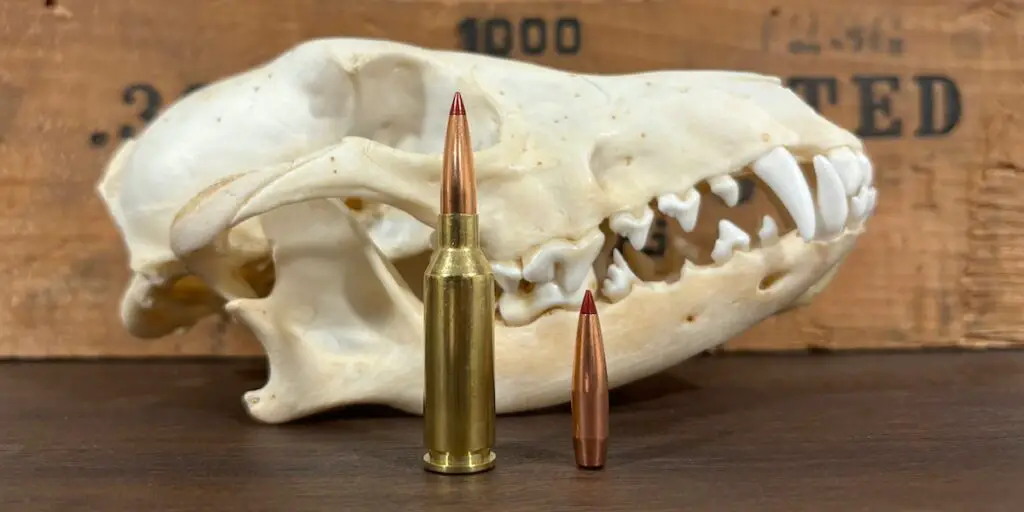
I’ve shot the 62gr ELD-VT, 74gr ELD Match, and 88gr ELD Match bullets from the 22 ARC into ballistic gel.
Here’s how they performed:
22 ARC Ammunition
At this instant, Hornady is the only company that manufactures factory 22 ARC ammo. They currently offer three loads for the cartridge: an offering in their V-Match line loaded with a 62 grain ELD-VT bullet, an offering in their Black line with a 75 grain ELD Match bullet, and an offering in their Match line with an 88-grain ELD Match bullet.
Both the Black and Match offerings are specifically intended for competition shooters who want an incredibly accurate and flat shooting load for banging steel or punching paper at extended range and are not designed for optimum performance on game.
Instead, look at the V Match 22 ARC load, which is excellent for hunting varmints in North America and elsewhere in the world. That’s still a very “soft” bullet specifically designed for rapid expansion at the expense of penetration. I cannot think of a better bullet for use on stuff like coyotes, prairie dogs, foxes, and bobcats, but I do not advise using that bullet on big game.
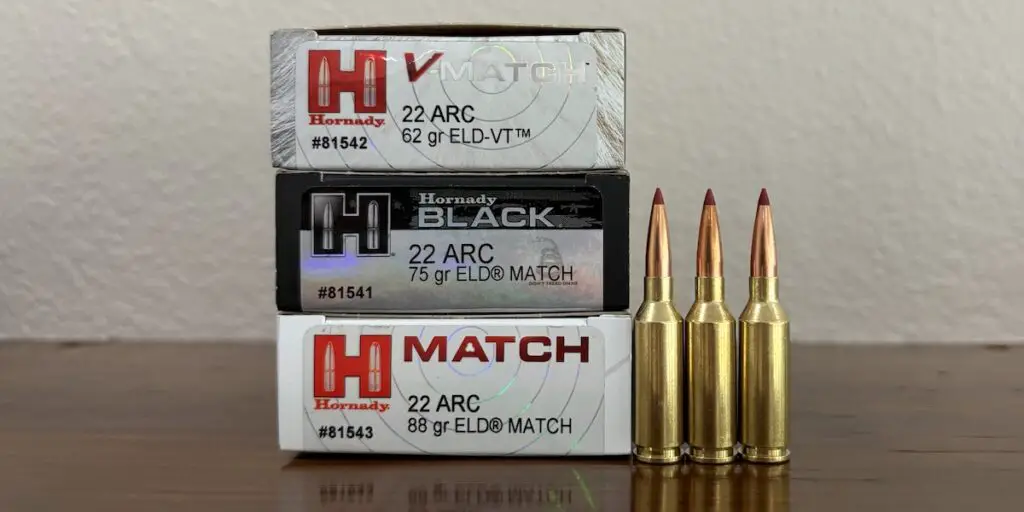
In fact, I’ve heard several stories of hunters experiencing terrible results when shooting a feral hog with an ELD-VT, so don’t try it!
You can make 22 ARC handloads using the 80gr Hornady ELD-X bullet also used in the 22 Creedmoor though. Hornady publishes online load data for the cartridge using that bullet in both a bolt action rifle and in a gas gun. You can make a pretty spicy load using the ELD-X that should be surprisingly effective on deer sized game (where hunting big game with a .22 caliber centerfire is legal).
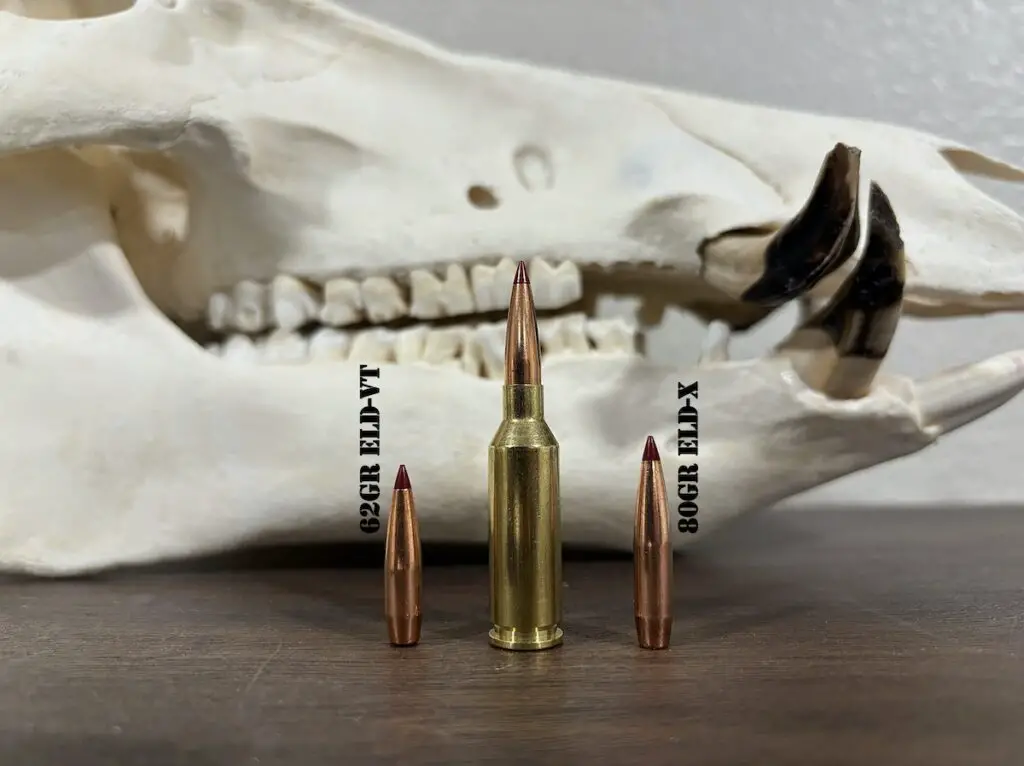
Hornady does not currently offer any 22 ARC factory loads suitable for hunting big game, but in my humble opinion, there is a screaming need for some factory loads using that 80gr ELD-X along with something along the lines of a really tough, 70gr CX lead free bullet.
We’ll see what the future holds on those fronts, but rest assured there are some excellent 22 ARC factory loads available for varmint hunting and target shooting at the moment.
22 ARC Rifles
Among other rifle manufacturers, Aero Precision, CMMG, Faxon, GA Precision, Howa, HS Precision, ODIN Works, Proof Research, Ruger, and Seekins Precision all produce a mix of bolt action and semi-automatic 22 ARC rifles.
That list of 22 Advanced Rifle Cartridge rifles will likely continue to grow as well. For instance, Ruger has recently picked up the 22 ARC and offers it in their Ruger American Rifle Generation II line in both Standard, Predator, and Ranch configurations with 16.1″, 20″, and 22″ barrel lengths.
Those are excellent options for a lower priced bolt-action 22 ARC rifle.

Likewise, Proof Research also offers the cartridge in their bolt-action Elevation MTR 2.0 with a 20″ barrel. That rifle is pricier than the Ruger offerings, but this is also a higher end rifle with more bells and whistles.
On the AR side, you can either purchase a complete 22 ARC AR-15, or just buy a 22 ARC upper receiver from several different companies to mate with a lower receiver you already own.
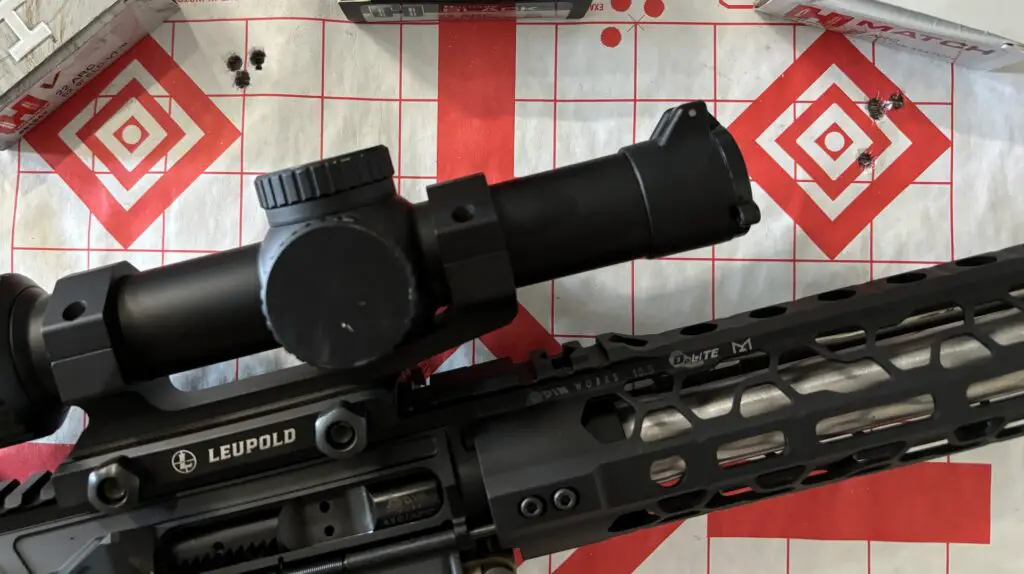
I have a 22 ARC complete upper receiver from ODIN Works. They offer 22 ARC uppers with either 16.1″, 18″, or 21″ long barrels (mine is 18″) made from 416R stainless steel. They are designed for use with a suppressor and all come threaded (1/2-28 TPI), with a thread protector, with adjustable gas systems, and with the ODIN XCH eXtended Charging Handle.
As you’ll see here in a minute, mine shot all three Hornady 22 ARC factory loads really well.
BUY A SEMI-AUTO 22 ARC RIFLE HERE
BUY A BOLT ACTION 22 ARC RIFLE HERE
22 ARC Accuracy
I’ve shot all three Hornady 22 ARC factory loads pretty extensively out of my ODIN Works upper receiver (18″ barrel). Even using a “plain Jane” lower receiver with a pretty standard trigger, that upper receiver still shot great with all three loads.
In each case, I shot 5 3-shot groups of each load for accuracy at 100 yards.
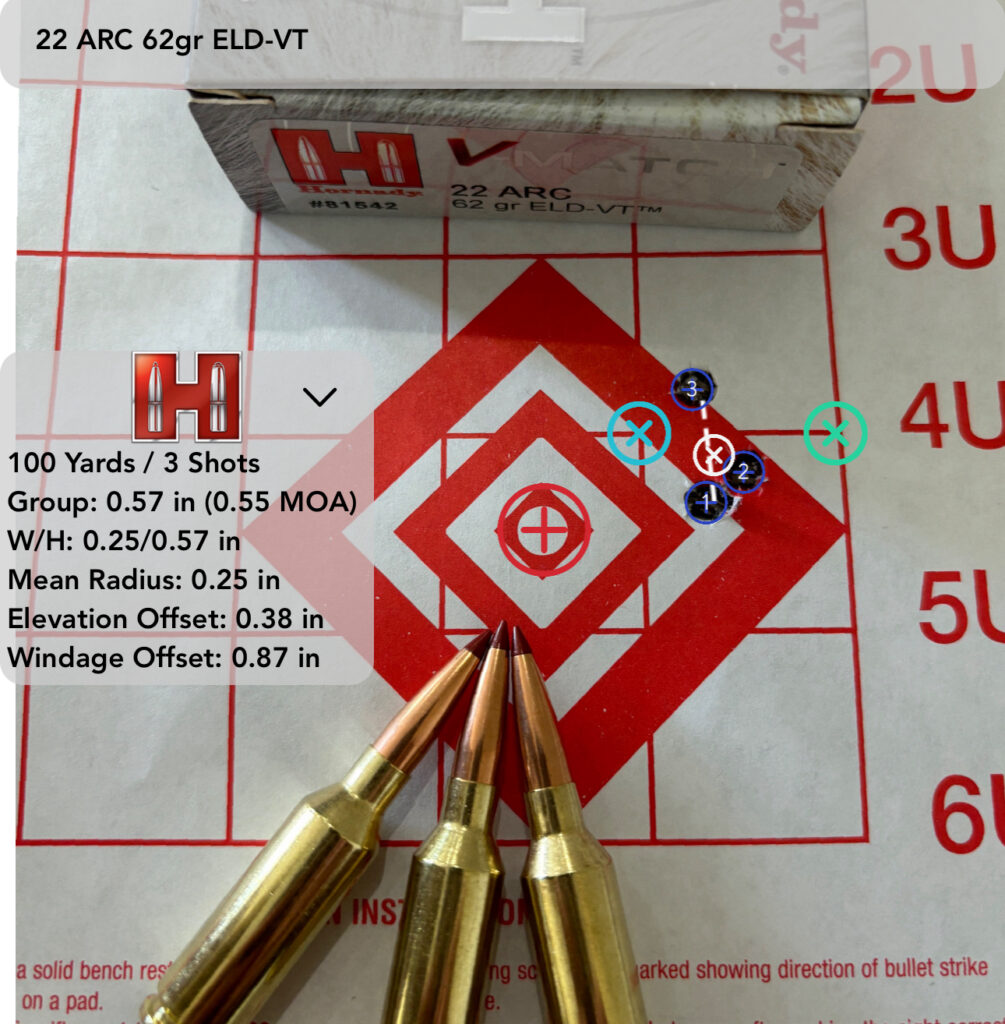
I obtained an average group size of .846″ for the 62gr ELD-VT ammunition. Average muzzle velocity was 3,202fps with an extreme spread of 46.4 and a standard deviation of 13.4.
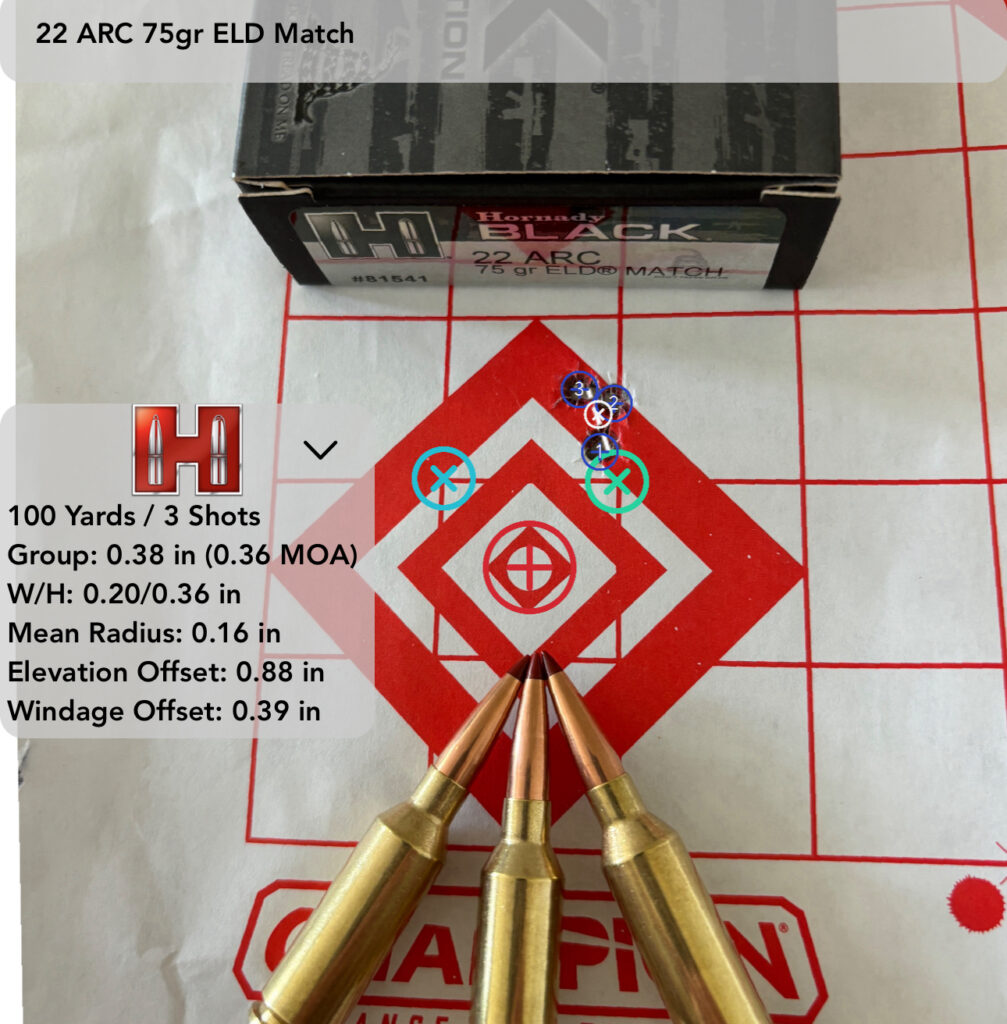
All three factory loads shot well in my rifle, but it seemed to like the 75gr and 88gr ammunition a tiny bit better than the 62gr load. The 75gr ELD Match load delivered an average group size of .768″. Average muzzle velocity was 2,943fps with an extreme spread of 62.0 and a standard deviation of 14.8.
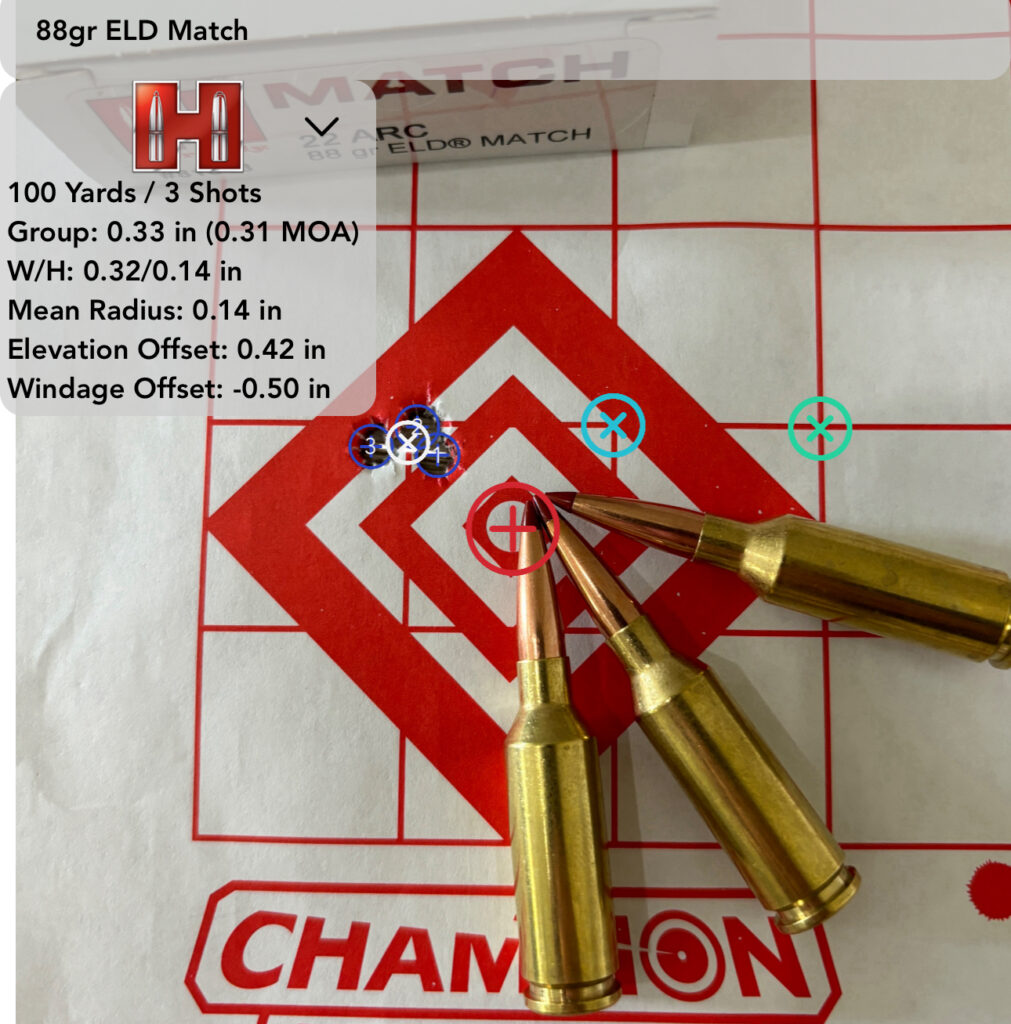
Finally, I obtained an average group size of .782″ for the 88gr ELD Match ammunition. Average muzzle velocity was 2,718fps with an extreme spread of 41.1 and a standard deviation of 12.6.
Of those 15 groups, only 4 measured over 1″: 1.0″, 1.07″, 1.1″, and 1.3″. My best groups for each load are displayed above. Everything else fell in the middle, clustered around the .6-8″ size.
That’s not bad at all for factory ammunition paired with a cobbled together AR-15!
Final Thoughts On The 22 ARC
So, what’s the deal with the 22 ARC? Is this a game changing cartridge the average hunter needs to invest in? Is it just another over hyped cartridge that will eventually fade into obscurity after a few years?
The 22 Advanced Rifle Cartridge is a niche round to be sure.
All in all, I think it’s a well designed cartridge that delivers a great balance of exceptional power and consistent accuracy in a compact package.
The varmint hunting market segment is already pretty crowded with the 223 and 22-250 sitting atop the heap and with other rounds like the 17 HMR, 204 Ruger, 22 Hornet, 222 Remington, 220 Swift, 22 Nosler, 224 Valkyrie, and 224 Weatherby Magnum, and others all occupying the majority of the remaining portion of that niche.
If you already have a nice varmint rifle that you really like, I wouldn’t necessarily recommend making the switch to the 22 ARC unless you just wanted to buy a new rifle.
On the other hand, I think the 22 ARC is a compelling choice for someone looking to jump into the varmint hunting world for the first time, especially if they plan on doing some hunting at night with a thermal.
The same is also true for someone who wanted to squeeze all the performance they can get out of a .22 caliber AR-15.
I’m skeptical the 22 ARC will turn into a world changing, barn burner of a cartridge, but I also wouldn’t be surprised if it managed to elbow itself into the lineup and become a favorite among serious varmint and predator hunters in the near future either.
Enjoy this article about the 22 ARC? Please share it with your friends on Facebook and Twitter.
Hornady provided information for the basic history of the 22 ARC (also here). The data used to compare the trajectory of the cartridges was obtained from Hornady’s and Winchester’s web site (here, here, and here). Maximum pressure and size data on the 22 ARC was obtained from SAAMI (here). I used Shooters Calculator to compare trajectories, wind drift, and recoil for the cartridges.
Make sure you subscribe to The Big Game Hunting Podcast and follow The Big Game Hunting Blog on Facebook, Instagram, Twitter, and YouTube.
NEXT: BEST 6.5 CREEDMOOR AMMO FOR HUNTING ELK, DEER, AND OTHER BIG GAME
NEXT: 11 BEST HUNTING EAR PROTECTION OPTIONS FOR HUNTERS IN 2021
NEXT: 101 BEST GIFTS FOR HUNTERS
John McAdams is a proficient blogger, experienced shooter, and long time hunter who has pursued big game in 8 different countries on 3 separate continents. John graduated from the United States Military Academy at West Point and is a veteran of combat tours with the US Army in Iraq & Afghanistan. In addition to founding and writing for The Big Game Hunting Blog, John has written for outdoor publications like Bear Hunting Magazine, The Texas State Rifle Association newsletter, Texas Wildlife Magazine, & Wide Open Spaces. Learn more about John here, read some of John’s most popular articles, and be sure to subscribe to his show: the Big Game Hunting Podcast.

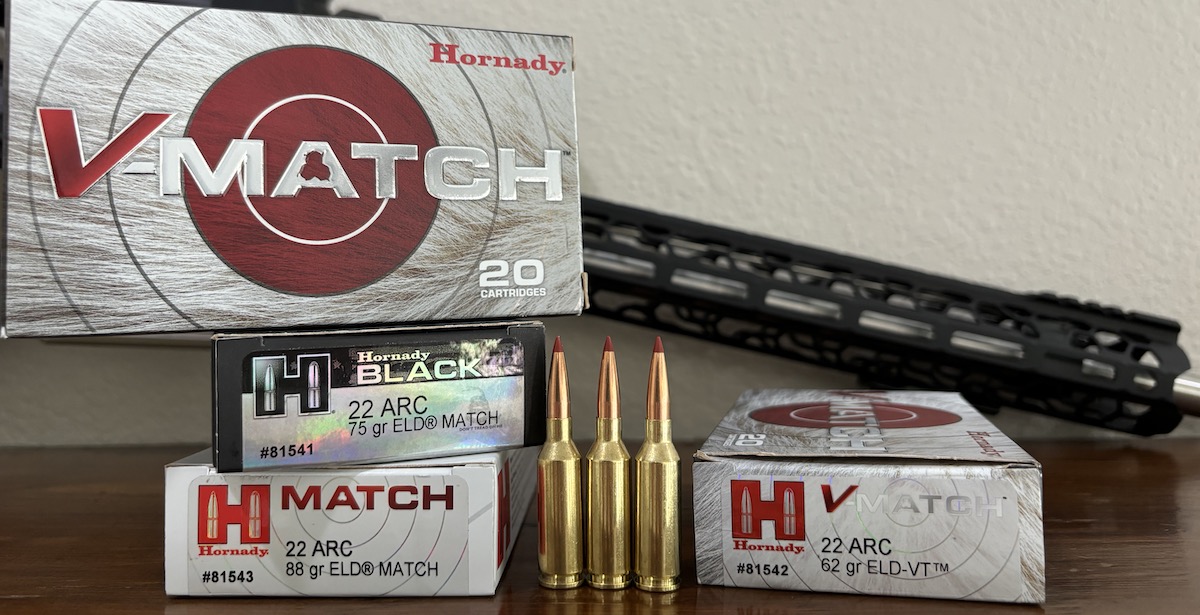
Anyone else noticing a pattern of Hornady making great bullets and using them to sell “new” rifles that are no better than the old ones? 6.5 creedmoor, 6mm creedmoor etc? the 22 arc is one of the few that actually has a position on its own merits as a higher performance ar 15 round, but certainly not a competitor to a 22-50 with a tighter twist, again it’s the bullet not the cartridge. Kudos to them for at least selling the bullets to reloaders even if they stop short of offering loaded ammo
Tikka makes a T3X in .22-250 with a 1:8 twist. Load up some 62 grain EDL-VTs and have at it.